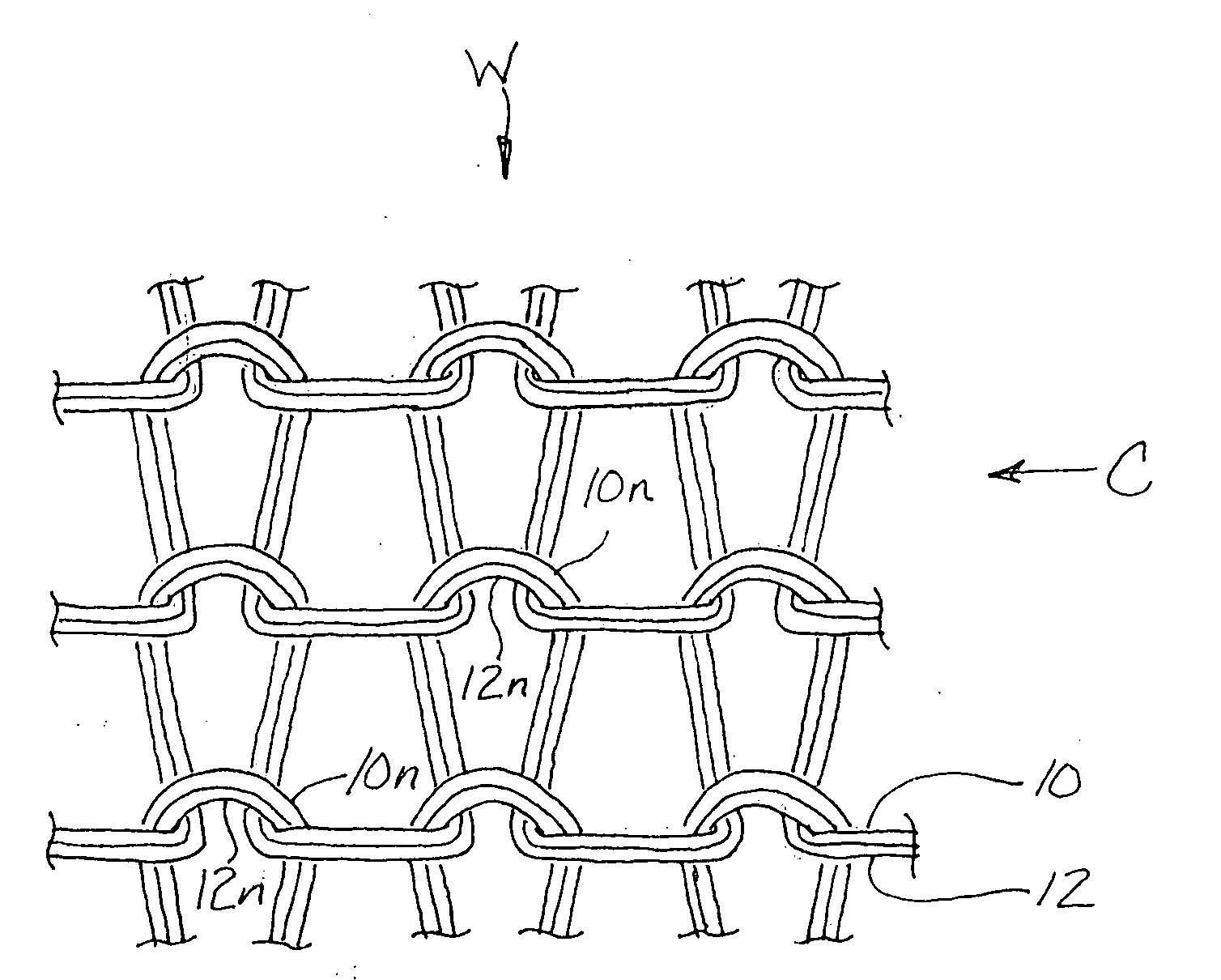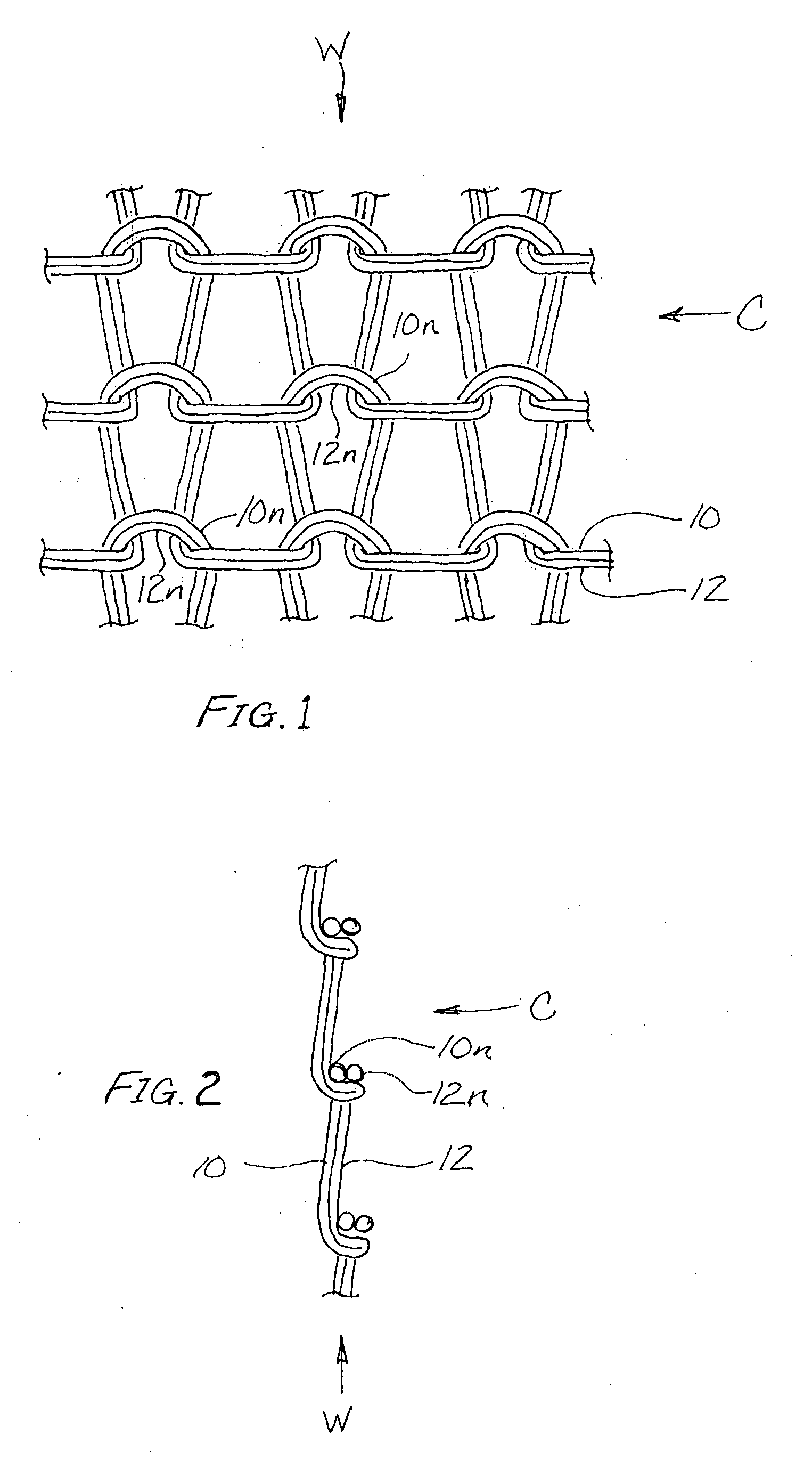Flame-resistant high visibility textile fabric for use in safety apparel
a textile fabric and high-visibility technology, applied in the field of textile fabrics, can solve the problems of not providing flame resistance properties that meet the astm f-, fabrics are stiff, abrasive and otherwise very uncomfortable, and achieve the effect of high visibility and flame resistan
- Summary
- Abstract
- Description
- Claims
- Application Information
AI Technical Summary
Benefits of technology
Problems solved by technology
Method used
Image
Examples
Embodiment Construction
[0015]Referring now to the accompanying drawings of FIGS. 1 and 2, a fragmentary portion of a textile fabric according to the present invention is shown at 10 in a representative embodiment fabricated by circular knitting on a circular knitting machine which may be of any suitable type the fabrication and construction of which is commonly known within the industry and therefore need not be fully described herein.
[0016]Such knitting machines basically include a rotatable needle cylinder with axial needle slots formed at a spacing from one another about the outer circumferential surface of the cylinder. A plurality of knitting needles, typically latch-type needles each having a yarn receiving hook and a closeable latch assembly, are reciprocably disposed within the axial cylinder slots. Stationary needle-actuating cams are positioned outwardly about and adjacent to the needle cylinder. Typically, the knitting machine has multiple knitting stations at which yarn feeding fingers or othe...
PUM
| Property | Measurement | Unit |
|---|---|---|
| Fraction | aaaaa | aaaaa |
| Fraction | aaaaa | aaaaa |
| Fraction | aaaaa | aaaaa |
Abstract
Description
Claims
Application Information
 Login to View More
Login to View More - R&D
- Intellectual Property
- Life Sciences
- Materials
- Tech Scout
- Unparalleled Data Quality
- Higher Quality Content
- 60% Fewer Hallucinations
Browse by: Latest US Patents, China's latest patents, Technical Efficacy Thesaurus, Application Domain, Technology Topic, Popular Technical Reports.
© 2025 PatSnap. All rights reserved.Legal|Privacy policy|Modern Slavery Act Transparency Statement|Sitemap|About US| Contact US: help@patsnap.com


